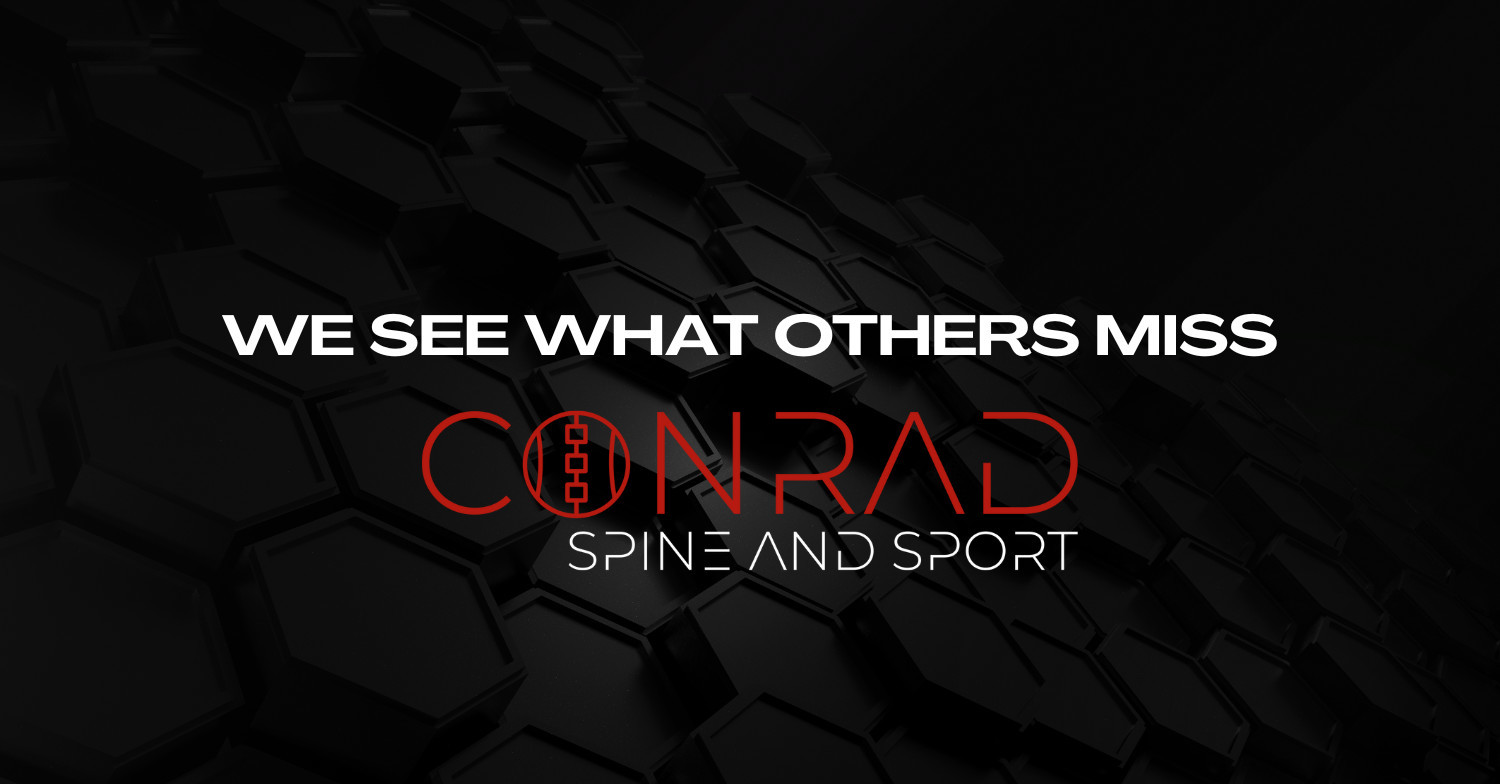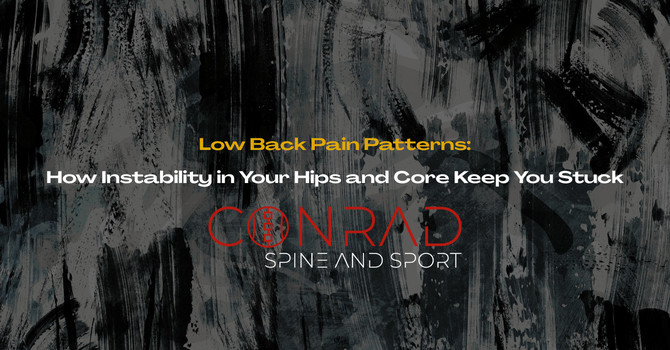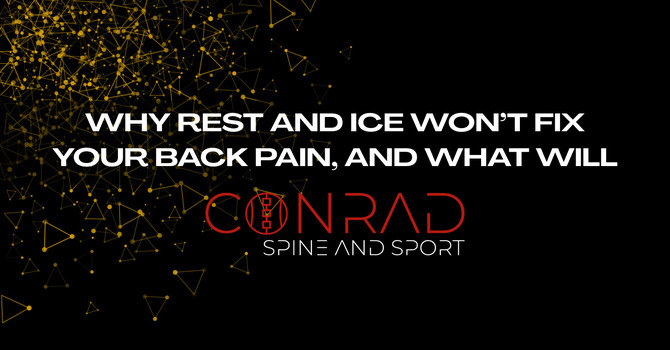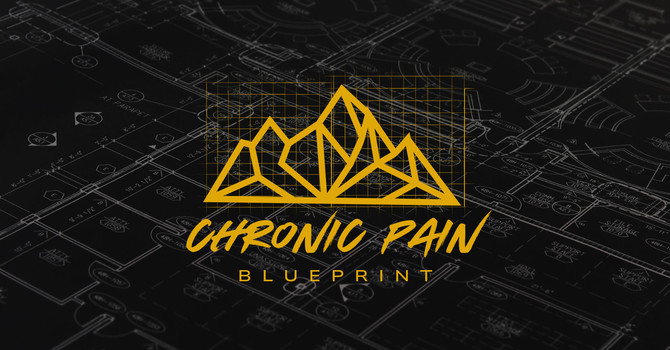
The Real Reason Your Back Still Hurts (It’s Not What You Think)
Back pain is one of the most common health complaints worldwide, affecting an estimated 540 million people at any given time according to the Lancet Low Back Pain Series (2018). In the U.S. alone, nearly 80% of adults will experience low back pain at some point in their lives. Billions of dollars are spent every year on surgeries, injections, imaging, and medications, yet despite these massive investments, chronic back pain rates continue to climb.
So the question is: why does back pain keep coming back? Why does it so often resist traditional treatments like pills, stretches, or even surgery? And more importantly, what is the real reason it keeps showing up in your life?
At Conrad Spine and Sport, we believe the answer lies in a fundamental shift of perspective: pain is not the problem. Pain is the signal. The reason your back still hurts is not because your body is broken, but because the underlying patterns that drive the pain have not been addressed.
The Problem With Symptom Chasing
If you have ever been told your pain is caused by a herniated disc, arthritis, or tight muscles, you are not alone. Imaging studies often find “abnormalities” in people with pain, but here is the twist: they also find them in people with no pain at all.
For example, Brinjikji et al. (2015) published a large-scale study in American Journal of Neuroradiology showing that degenerative changes in the spine such as discs, arthritis, and stenosis are present in the majority of pain-free adults. In people over 40, up to 80% had disc degeneration on MRI without any back pain.
This tells us something critical: imaging findings and pain do not always match up. If treatment is focused only on “fixing” what shows up on an image, or worse, only numbing the painful area, it often fails to create lasting results. The reason? The pattern that produced the overload in the first place has not changed.
Why Back Pain Persists: The Hidden Patterns
Your spine does not move in isolation. Every step, every twist, every lift is part of a coordinated dance between your hips, core, shoulders, and nervous system. When one piece of the system falters, others compensate. Over time, these compensations become engrained patterns that overload certain tissues.
Back pain is rarely about one single tissue breaking down. It is about:
-
Biomechanical Drivers: movement inefficiencies, failed load transfer, and chronic compensations (like overusing the low back instead of hips).
-
Neurological Drivers: protective guarding, poor proprioception, or altered motor control.
-
Metabolic and Inflammatory Drivers: poor recovery, chronic stress, or systemic inflammation amplifying pain signals.
-
Psychosocial Drivers: fear of movement, stress, and the mental weight of chronic pain.
When these drivers align, pain becomes persistent, even after the initial tissue irritation has healed.
The Science of Patterns vs. Symptoms
Research in pain science has moved away from the idea of pain as purely structural. Studies show that:
-
Exercise and movement retraining consistently outperform passive treatments in long-term back pain outcomes (Cochrane Reviews, 2021).
-
Multidisciplinary approaches combining rehab, education, and lifestyle change are more effective than single-modality care (British Journal of Sports Medicine, 2020).
-
Cognitive and emotional factors like fear-avoidance behaviors significantly influence pain persistence (Vlaeyen and Linton, Pain, 2000).
In short, the research supports what we see clinically every day: back pain is not solved by chasing symptoms. It is solved by correcting patterns.
The "A-Ha" Moment: Why Your Pain Keeps Coming Back
Think about it this way:
-
If your ankle collapses inward when you walk, your hip and spine will absorb that faulty load. No injection or muscle rub will change that.
-
If your nervous system is locked in a stress response, your muscles will stay guarded and sensitive. No MRI or medication can reset that by itself.
-
If your daily habits and recovery strategies do not support healing, tissues never get the chance to adapt.
This is why so many treatments fail. They aim at the sore spot but miss the system driving it. That is like putting duct tape over a warning light on your dashboard. It covers the symptom, but the engine is still failing underneath.
How We Approach It Differently at Conrad Spine and Sport
Our strategies are built on one core principle: fix the driver, not just the pain.
We do this by using the Chronic Pain Blueprint, our system that looks at the full landscape of pain drivers:
-
Biomechanical Assessment → we identify failed load transfer, poor stabilization, and compensation patterns.
-
Nervous System Reset → we integrate breathing mechanics and proprioceptive drills to calm guarding and rewire movement.
-
Metabolic and Recovery Support → we evaluate energy systems, inflammation, and recovery patterns to restore resilience.
-
Psychosocial Clarity → we help patients understand their pain, reducing fear and unlocking progress.
When these elements are addressed together, patients do not just get out of pain. They build capacity, stability, and confidence. That is why our patients often see progress where others have failed.
Why This Works: Research-Backed Alignment
-
A 2016 JAMA study showed that mind-body therapies combined with movement retraining led to better outcomes than standard care.
-
The Lancet series (2018) recommended active care, patient education, and avoidance of unnecessary imaging and surgery as the best pathway forward.
-
Rehabilitation that incorporates strength, coordination, and nervous system retraining reduces recurrence of back pain significantly compared to passive care (BMJ Open, 2019).
This is exactly the framework we have built into our patient care.
The Takeaway: It is Not About Your Back, It is About the Pattern
If you have tried everything, therapy, injections, even surgery, and your back still hurts, it is not because you are broken. It is because the true driver has not been addressed.
The real reason your back still hurts is not the disc, not the arthritis, not the weak core. It is the uncorrected pattern running through your body and nervous system.
The good news? Patterns can change. With the right process, you can retrain your body, calm your nervous system, and finally move without fear.
Next Steps: Where to Begin
At Conrad Spine and Sport, we specialize in helping people just like you uncover and fix these hidden drivers of pain. Our programs are designed not just to reduce pain, but to rebuild the foundation so it stays gone.
Take the Chronic Pain Quiz to see which patterns might be driving your pain.
Explore our approach at Conrad Spine and Sport.
Book a Discovery Visit and start your path to real, lasting change.
- Dr. Nick

Nick Conrad
Contact Me



